Full-Scale Testing on Seismic Performance of Surge Arrester with Retrofitted Composite Insulators
Abstract
1. Introduction
2. Input Motion, Specimen Description, and Seismic Demand Analysis
2.1. Input Motion
2.2. Specimen Description and Seismic Demand Analysis
3. Bending Test of Composite Insulator with Retrofitted Bonded Sleeve Joints
3.1. Bonding Failure at the Joint of Composite Insulators under Bending
3.2. Bending Test of Composite Insulator Retrofitted with Shear Stiffeners
3.3. Bending Test of Composite Insulator Retrofitted with Cast Iron Flanges
4. Seismic Performance Validation by Full-Scale Shaking Table Test
4.1. Testing Design
4.2. Testing Result
- (1)
- Result in 1.4 × 0.4 g input test case
- (2)
- Result in 1.4 × 0.5 g input test case
4.3. Trend Analysis of Seismic Responses among Different Testing Cases
5. Conclusions
- (1)
- The bonded sleeve joint between the GFRP tube and the metal end fitting was a weak point for the bending strength of the composite insulator, which can be retrofitted by introducing ring-shaped shear stiffeners at the joint and replacing the cast iron flange with an aluminium one.
- (2)
- Full-scale cantilever bending tests were carried out to assess the bending strength of the retrofitted composite insulator. The shear stiffener was seen to prevent bonding failure at the joint and increase the specimen’s bending strength. The numerical modelling and design optimizations of shear stiffeners are open to further study.
- (3)
- The full-scale shaking table test of the 1000 kV surge arrester with retrofitted insulators demonstrated the equipment’s satisfactory performance during an extreme seismic action of 1.4 × 0.5 g PGA, making it suitable for installation in the UHV substation in regions with high seismic risk.
- (4)
- The responses of the equipment during the shaking table test were mainly in the elastic range, but its damping ratio increased from 2% to 6%, indicating that the damping ratio is a sensitive parameter for the damage detection of equipment with composite insulators.
Author Contributions
Funding
Data Availability Statement
Acknowledgments
Conflicts of Interest
References
- Chalishazar, V.H.; Brekken, T.K.A.; Johnson, D.; Yu, K.; Newell, J.; Chin, K.; Weik, R.; Dierickx, E.; Craven, M.; Sauter, M.; et al. Connecting Risk and Resilience for a Power System Using the Portland Hills Fault Case Study. Processes 2020, 8, 1200. [Google Scholar] [CrossRef]
- Tofani, A.; D’agostino, G.; di Pietro, A.; Giovinazzi, S.; Pollino, M.; Rosato, V.; Alessandroni, S. Operational Resilience Metrics for Complex Inter-Dependent Electrical Networks. Appl. Sci. 2021, 11, 5842. [Google Scholar] [CrossRef]
- Dinh, N.H.; Kim, J.Y.; Lee, S.J.; Choi, K.K. Seismic Vulnerability Assessment of Hybrid Mold Transformer Based on Dynamic Analyses. Appl. Sci. 2019, 9, 3180. [Google Scholar] [CrossRef]
- Yu, Y.; Li, G.; Li, P.; Zhu, Q. Investigation and Analysis of Electric Equipment Damage in Sichuan Power Grid Caused by Wenchuan Earthquake. Power System Technology 2008, 32, 1–6. [Google Scholar]
- Pavel, F.; Vacareanu, R. Seismic Risk Assessment for Elements of the Electric Network in Romania. Buildings 2022, 12, 244. [Google Scholar] [CrossRef]
- Ang, H.S.; Pires, J.A.; Villaverde, R. A Model for the Seismic Reliability Assessment of Electric Power Transmission Systems. Reliab. Eng. Syst. Saf. 1996, 51, 7–22. [Google Scholar] [CrossRef]
- Kazama, M.; Noda, T. Damage Statistics (Summary of the 2011 off the Pacific Coast of Tohoku Earthquake Damage). Soils Found. 2012, 52, 780–792. [Google Scholar] [CrossRef]
- Kwasinski, A.; Eidinger, J.; Tang, A.; Tudo-Bornarel, C. Performance of Electric Power Systems in the 2010-2011 Christchurch, New Zealand, Earthquake Sequence. Earthq. Spectra 2014, 30, 205–230. [Google Scholar] [CrossRef]
- You, H.; Zhao, F. M7.0 Earthquake in Lushan and Damage Cause Analysis of Power Facilities. Electr. Power Constr. 2013, 34, 100–104. [Google Scholar] [CrossRef]
- Salem, A.A.; Lau, K.Y.; Abdul-Malek, Z.; Zhou, W.; Al-Ameri, S.; Al-Gailani, S.A.; Rahman, R.A. Investigation of High Voltage Polymeric Insulators Performance under Wet Pollution. Polymers 2022, 14, 1236. [Google Scholar] [CrossRef]
- Koo, J.H.; Seong, J.K.; Hwang, R.; Lee, B.W. Experimental Assessment on Air Clearance of Multiple Valve Unit Considering Switching Impulse and Dc Superimposed Switching Impulse. Energies 2020, 13, 2958. [Google Scholar] [CrossRef]
- Liu, Z.; Cheng, Y.; Lu, Z. Shake Table Test on UHV Standardization Lightning Arrester Installed with Shear-Type Lead Dampers. High Volt. Eng. 2018, 44, 2595–2602. [Google Scholar]
- Saleem, M.Z.; Akbar, M. Review of the Performance of High-Voltage Composite Insulators. Polymers 2022, 14, 431. [Google Scholar] [CrossRef] [PubMed]
- Papailiou, K.O.; Schmuck, F. Silicone Composite Insulators: Materials, Design, Applications; Springer: Berlin/Heidelberg, Germany, 2013. [Google Scholar] [CrossRef]
- EPRI. Survey of Utility Experiences with Composite/Polymer Components in Transmission Class (69-765 KV Class) Substations; EPRI: Palo Alto, CA, USA, 2004. [Google Scholar]
- Cheng, Y.; Li, S.; Lu, Z.; Liu, Z.; Zhu, Z. Seismic Risk Mitigation of Cylindrical Electrical Equipment with a Novel Isolation Device. Soil Dyn. Earthq. Eng. 2018, 111, 41–52. [Google Scholar] [CrossRef]
- Yang, Z.; Xie, Q.; He, C.; Xue, S. Numerical Investigation of the Seismic Response of a UHV Composite Bypass Switch Retrofitted with Wire Rope Isolators. Earthq. Eng. Eng. Vib. 2021, 20, 275–290. [Google Scholar] [CrossRef]
- Fang, H.; Bai, Y.; Liu, W.; Qi, Y.; Wang, J. Connections and Structural Applications of Fibre Reinforced Polymer Composites for Civil Infrastructure in Aggressive Environments. Compos. B Eng. 2019, 164, 129–143. [Google Scholar] [CrossRef]
- Kumosa, M.; Armentrout, D.; Kumosa, L.; Han, Y.; Carpenter, S.H. Analyses of Composite Insulators with Crimped End-Fittings: Part II—Suitable Crimping Conditions. Compos. Sci. Technol. 2002, 62, 1209–1221. [Google Scholar] [CrossRef]
- Kumosa, M.; Han, Y.; Kumosa, L. Analyses of Composite Insulators with Crimped End-Fittings: Part I—Non Linear Finite Element Computations. Compos. Sci. Technol. 2002, 62, 1191–1207. [Google Scholar] [CrossRef]
- Luo, F.J.; Yang, X.; Bai, Y. Member Capacity of Pultruded GFRP Tubular Profile with Bolted Sleeve Joints for Assembly of Latticed Structures. J. Compos. Constr. 2015, 20, 4015080. [Google Scholar] [CrossRef]
- Luo, F.J.; Bai, Y.; Yang, X.; Lu, Y. Bolted Sleeve Joints for Connecting Pultruded FRP Tubular Components. J. Compos. Constr. 2016, 20, 4015024. [Google Scholar] [CrossRef]
- Qiu, C.; Feng, P.; Yang, Y.; Zhu, L.; Bai, Y. Joint Capacity of Bonded Sleeve Connections for Tubular Fibre Reinforced Polymer Members. Compos. Struct. 2017, 163, 267–279. [Google Scholar] [CrossRef]
- Fawzia, S.; Zhao, X.L.; Al-Mahaidi, R. Bond-Slip Models for Double Strap Joints Strengthened by CFRP. Compos. Struct. 2010, 92, 2137–2145. [Google Scholar] [CrossRef]
- Duriatti, D.; Béakou, A.; Levillain, R. Optimisation of the Crimping Process of a Metal End-Fitting onto a Composite Rod. Compos. Struct. 2006, 73, 278–289. [Google Scholar] [CrossRef]
- Prenleloup, A.; Gmür, T.; Botsis, J.; Papailiou, K.O.; Obrist, K. Stress and Failure Analysis of Crimped Metal–Composite Joints Used in Electrical Insulators Subjected to Bending. Compos. Part A Appl. Sci. Manuf. 2009, 40, 644–652. [Google Scholar] [CrossRef]
- Qureshi, J. A Review of Fibre Reinforced Polymer Structures. Fibers 2022, 10, 27. [Google Scholar] [CrossRef]
- Lacey, A.W.; Chen, W.; Hao, H.; Bi, K. Review of Bolted Inter-Module Connections in Modular Steel Buildings. J. Build. Eng. 2019, 23, 207–219. [Google Scholar] [CrossRef]
- Castagnetti, D.; Corigliano, P.; Barone, C.; Crupi, V.; Dragoni, E.; Guglielmino, E. Predicting the Macroscopic Shear Strength of Tightened-Bonded Joints from the Intrinsic High-Pressure Properties of Anaerobic Adhesives. Metals 2022, 12, 1141. [Google Scholar] [CrossRef]
- Rośkowicz, M.; Godzimirski, J.; Komorek, A.; Jasztal, M. The Effect of Adhesive Layer Thickness on Joint Static Strength. Materials 2021, 14, 1499. [Google Scholar] [CrossRef]
- Orefice, A.; Mancusi, G.; Dumont, S.; Lebon, F. An Experimental/Numerical Study on the Interfacial Damage of Bonded Joints for Fibre-Reinforced Polymer Profiles at Service Conditions. Technologies 2016, 4, 20. [Google Scholar] [CrossRef]
- Zhang, Z.; Wu, C.; Nie, X.; Bai, Y.; Zhu, L. Bonded Sleeve Connections for Joining Tubular GFRP Beam to Steel Member: Numerical Investigation with Experimental Validation. Compos. Struct. 2016, 157, 51–61. [Google Scholar] [CrossRef]
- Li, S.; Tsang, H.-H.; Cheng, Y.; Lu, Z. Seismic Testing and Modeling of Cylindrical Electrical Equipment with GFRP Composite Insulators. Compos. Struct. 2018, 194, 454–467. [Google Scholar] [CrossRef]
- Roh, H.; Oliveto, N.D.; Reinhorn, A.M. Experimental Test and Modeling of Hollow-Core Composite Insulators. Nonlinear Dyn. 2012, 69, 1651–1663. [Google Scholar] [CrossRef]
- Epackachi, S.; Dolatshahi, K.M.; Oliveto, N.D.; Reinhorn, A.M. Mechanical Behavior of Electrical Hollow Composite Post Insulators: Experimental and Analytical Study. Eng. Struct. 2015, 93, 129–141. [Google Scholar] [CrossRef]
- Bonhôte, P.; Gmür, T.; Botsis, J.; Papailiou, K.O. Stress and Damage Analysis of Composite–Aluminium Joints Used in Electrical Insulators Subject to Traction and Bending. Compos. Struct. 2004, 64, 359–367. [Google Scholar] [CrossRef]
- Wang, H.; Cheng, Y.; Lu, Z.; Zhu, Z.; Zhang, S. Research on Bending Rigidity at Flange Connections of UHV Composite Electrical Equipment. Shock Vib. 2020, 2020. [Google Scholar] [CrossRef]
- Cheng, Y.; Zhu, Z.; Lu, Z.; Huang, B.; Li, S. Q/GDW 11391-2015 Technical Code for Seismic Test of High Voltage Pillar Type Electrical Equipment; Technical Standard; State Grid Corporation of China: Beijing, China, 2015; pp. 1–22. [Google Scholar]
- Whittaker, A.S.; Fenves, G.L.; Gilani, A.S.J. Seismic Evaluation and Analysis of High-Voltage Substation Disconnect Switches. Eng Struct 2007, 29, 3538–3549. [Google Scholar] [CrossRef]
- Fahad, M. Seismic Evaluation and Qualification of Transformer Bushings; State University of New York at Buffalo: Buffalo, NY, USA, 2013. [Google Scholar]
- Alessandri, S.; Giannini, R.; Paolacci, F.; Amoretti, M.; Freddo, A. Seismic Retrofitting of an HV Circuit Breaker Using Base Isolation with Wire Ropes. Part 2: Shaking-Table Test Validation. Eng. Struct. 2015, 98, 263–274. [Google Scholar] [CrossRef]
- He, C.; He, Z.; Xie, Q. Experimental Evaluations on Seismic Performances of Porcelain and GFRP Composite UHV GIS Bushings. Materials 2022, 15, 4035. [Google Scholar] [CrossRef]
- Cheng, Y.; Liu, Z.; Lu, Z.; Zhu, Z.; Li, S.; Liu, H. Experimental Study on Seismic Performance and Structural Characteristics of ±800 KV Composite Post Insulators. Electr. Power 2017, 50, 89–96. [Google Scholar] [CrossRef]
- GB. Chinese Standard—GB50260 Code for Seismic Design of Electrical Installations; China Planning Press: Beijing, China, 2013. [Google Scholar]
- Zebing, D.; Zhicheng, L.; Yongfeng, C.; Zhubing, Z.; Min, Z.; Fengxin, Z.; Hongbing, Y. Q/GDW 11132 Technical Specification for Seismic Design of Ultra-High Voltage Porcelain Insulating Equipment and Installation/Maintenance to Energy Dissipation Devices; Technical Standard; State Grid Corporation of China: Beijing, China, 2013; pp. 1–31. [Google Scholar]
- Li, S.; Tsang, H.H.; Cheng, Y.; Lu, Z. Considering Seismic Interaction Effects in Designing Steel Supporting Structure for Surge Arrester. J. Constr. Steel Res. 2017, 132, 151–163. [Google Scholar] [CrossRef]
- IEEE. IEEE 693 Recommended Practice for Seismic Design of Substations; IEEE: New York, NY, USA, 2005. [Google Scholar]
- Kayhan, A.H.; Demir, A.; Palanci, M. Multi-Functional Solution Model for Spectrum Compatible Ground Motion Record Selection Using Stochastic Harmony Search Algorithm. Bullet. Earthq. Eng. 2022, 20, 6407–6440. [Google Scholar] [CrossRef]
- Cheng, Y.; Zhang, F.; Li, S.; Lu, Z.; Huang, B.; Huang, H.; Zhang, Z.; You, H. Q/GDW 11594-2016 Seismic Performance Testing Method for Composite Post Insulator; Technical Standard; State Grid Corporation of China: Beijing, China, 2016; pp. 1–13. [Google Scholar]
- Solomon, O.M., Jr. PSD Computations Using Welch’s Method. Sandia Rep. 1991, 91, 1–64. [Google Scholar] [CrossRef]
- Gattulli, V.; Potenza, F.; Piccirillo, G. Multiple Tests for Dynamic Identification of a Reinforced Concrete Multi-Span Arch Bridge. Buildings 2022, 12, 833. [Google Scholar] [CrossRef]
- Mathworks Control System Toolbox. Available online: www.mathworks.com (accessed on 20 June 2021).
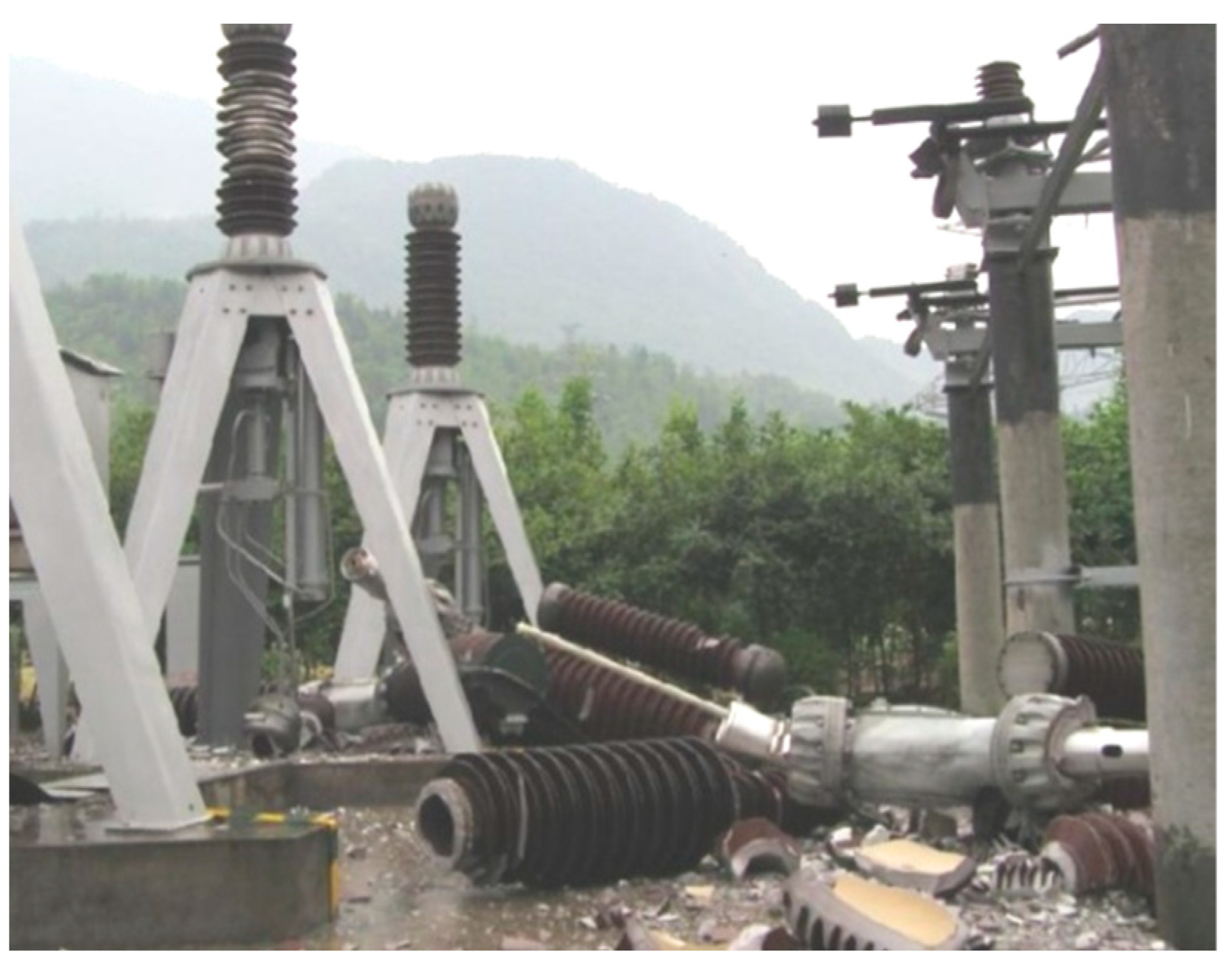

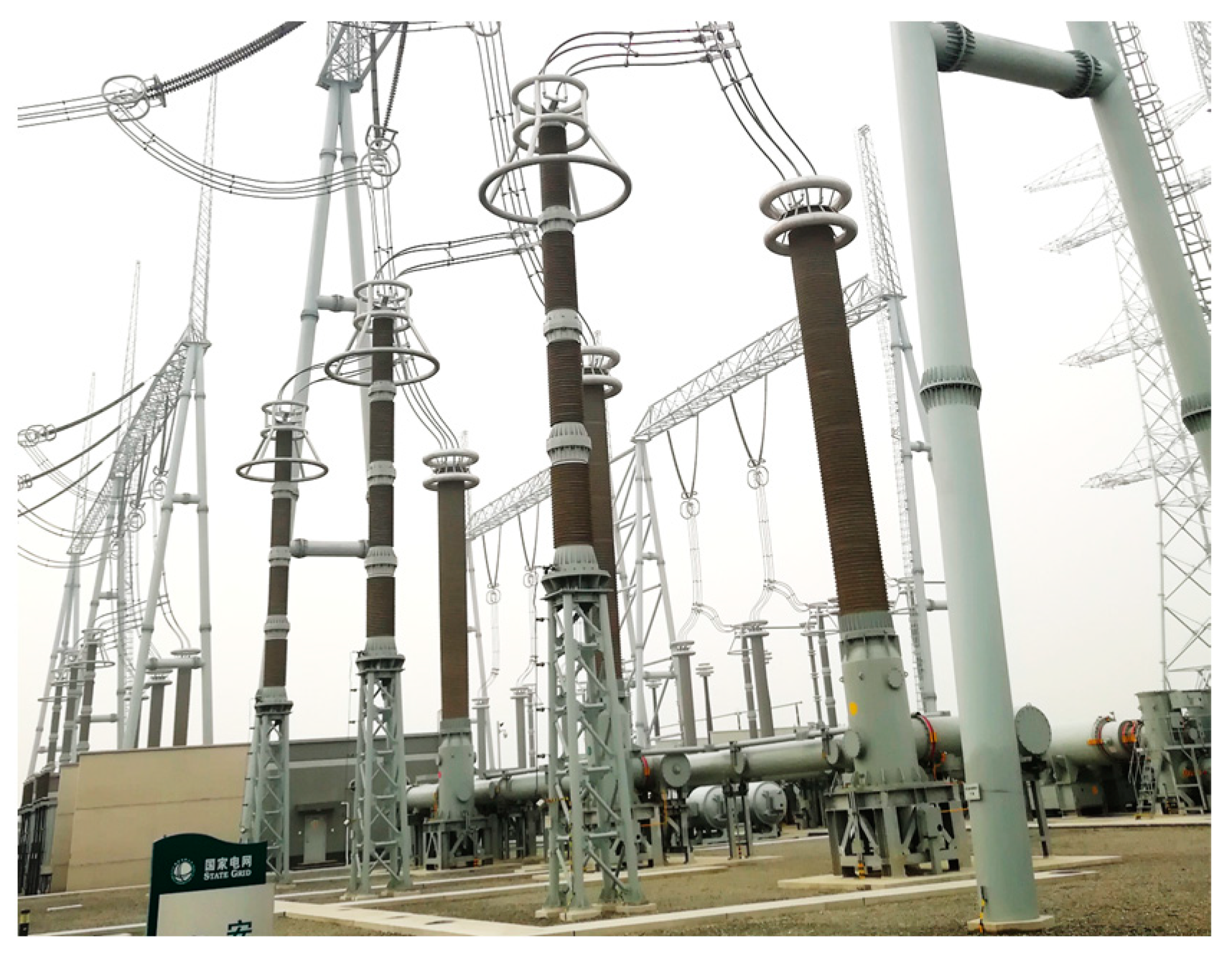
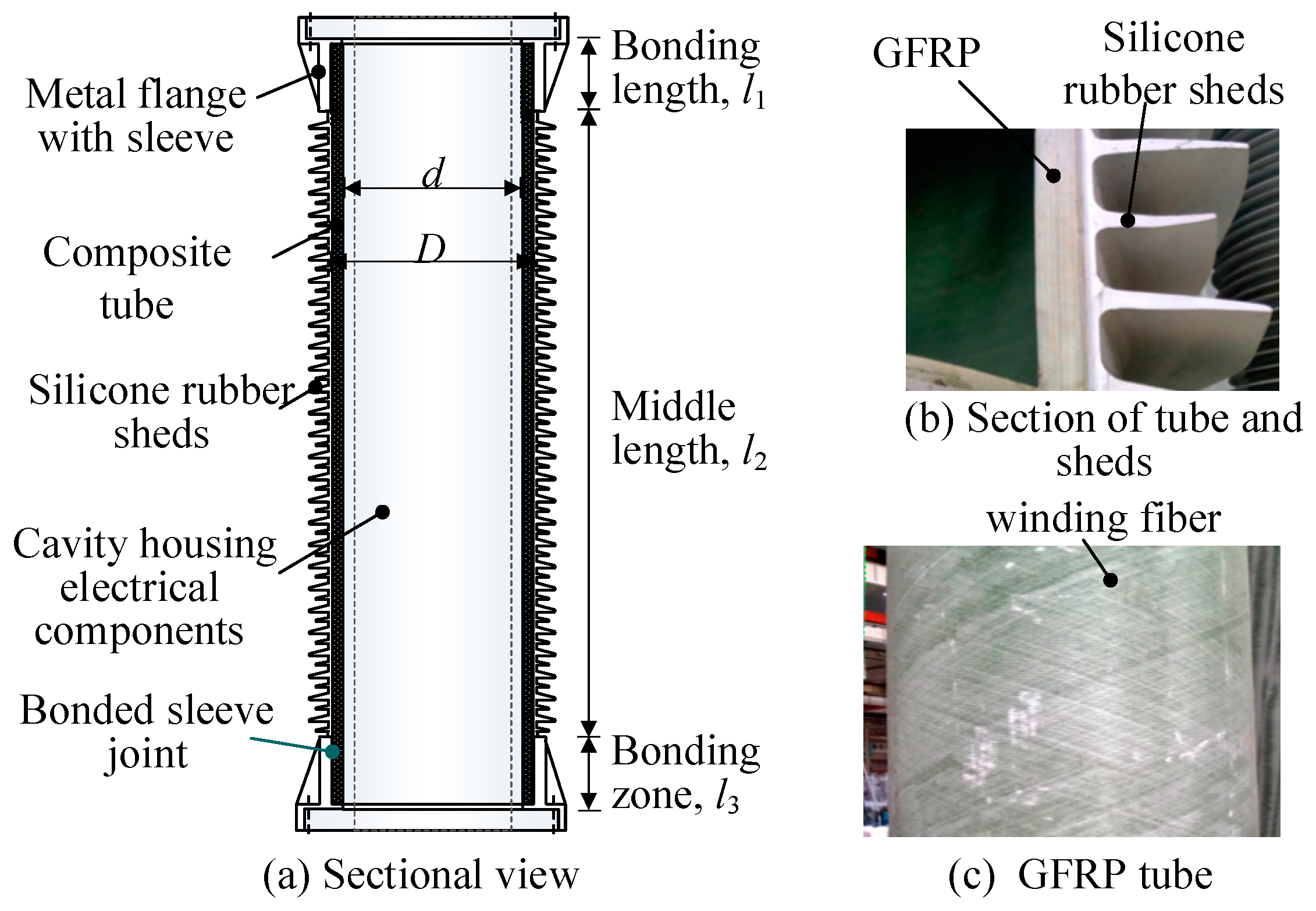
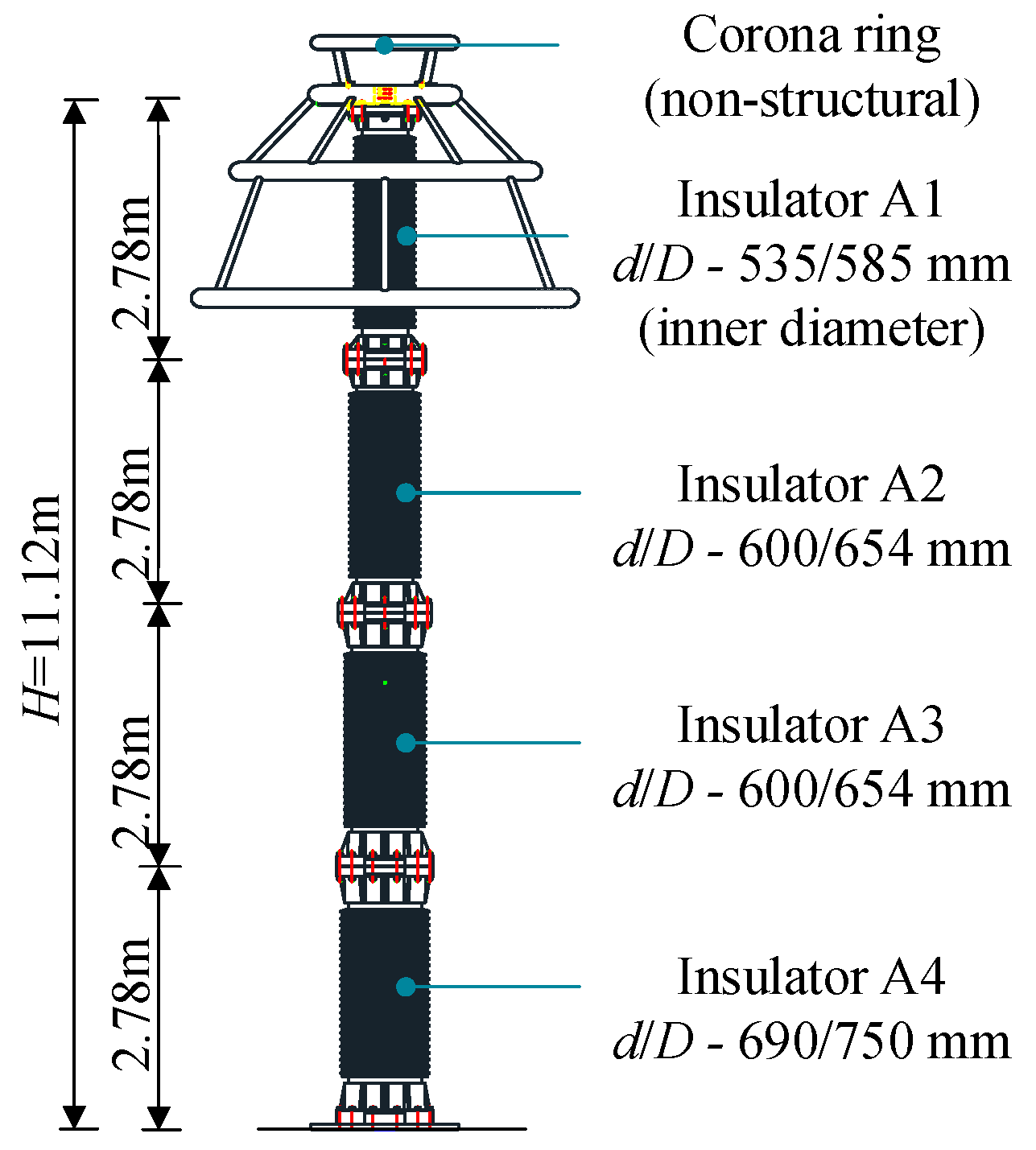
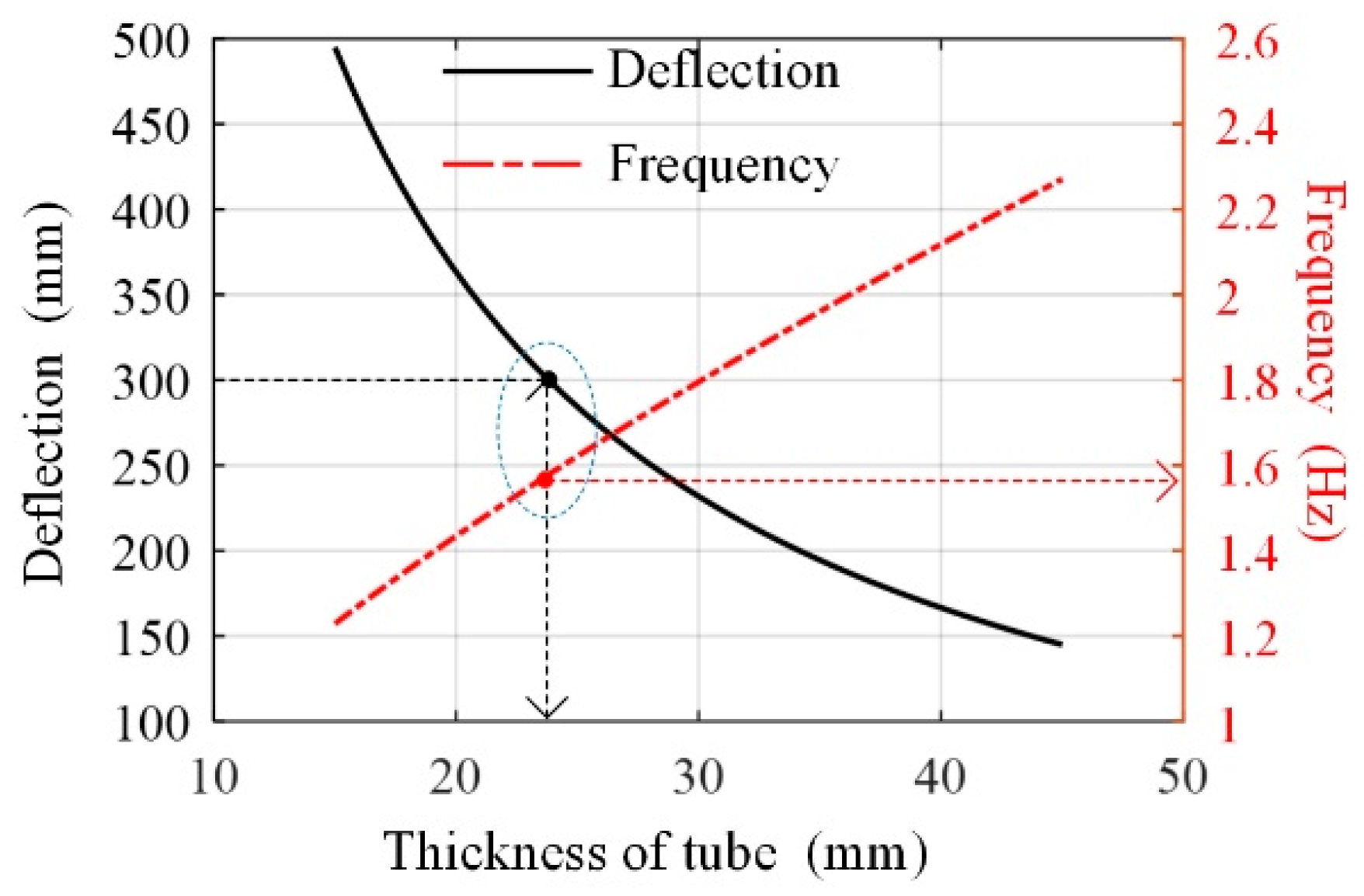





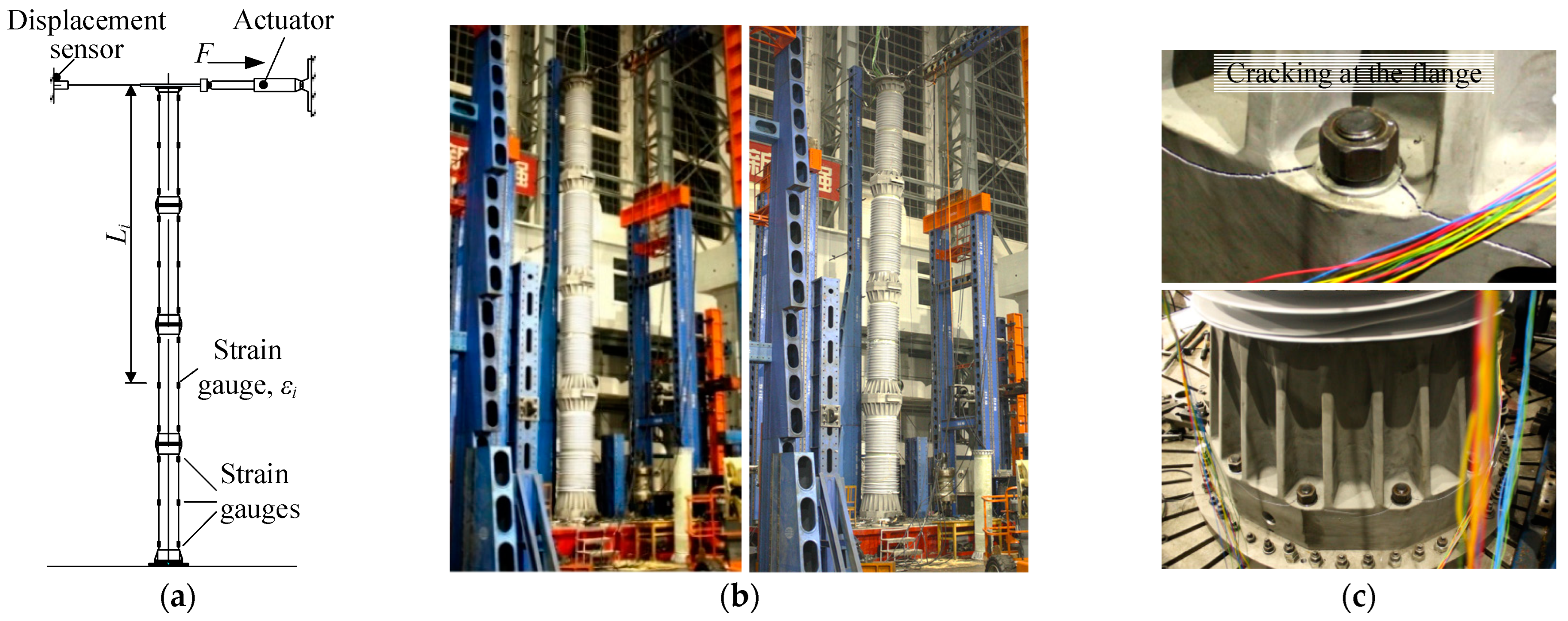
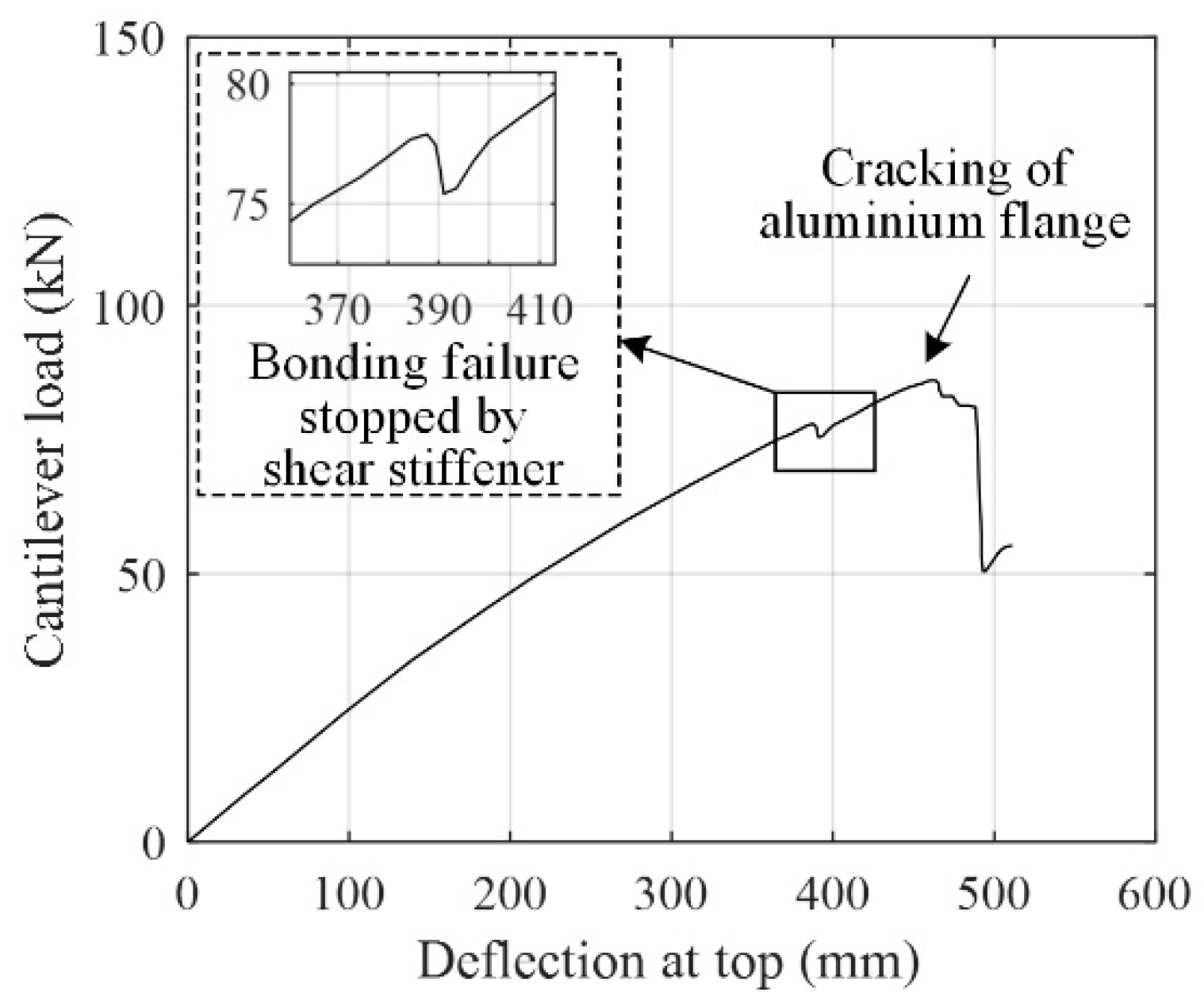

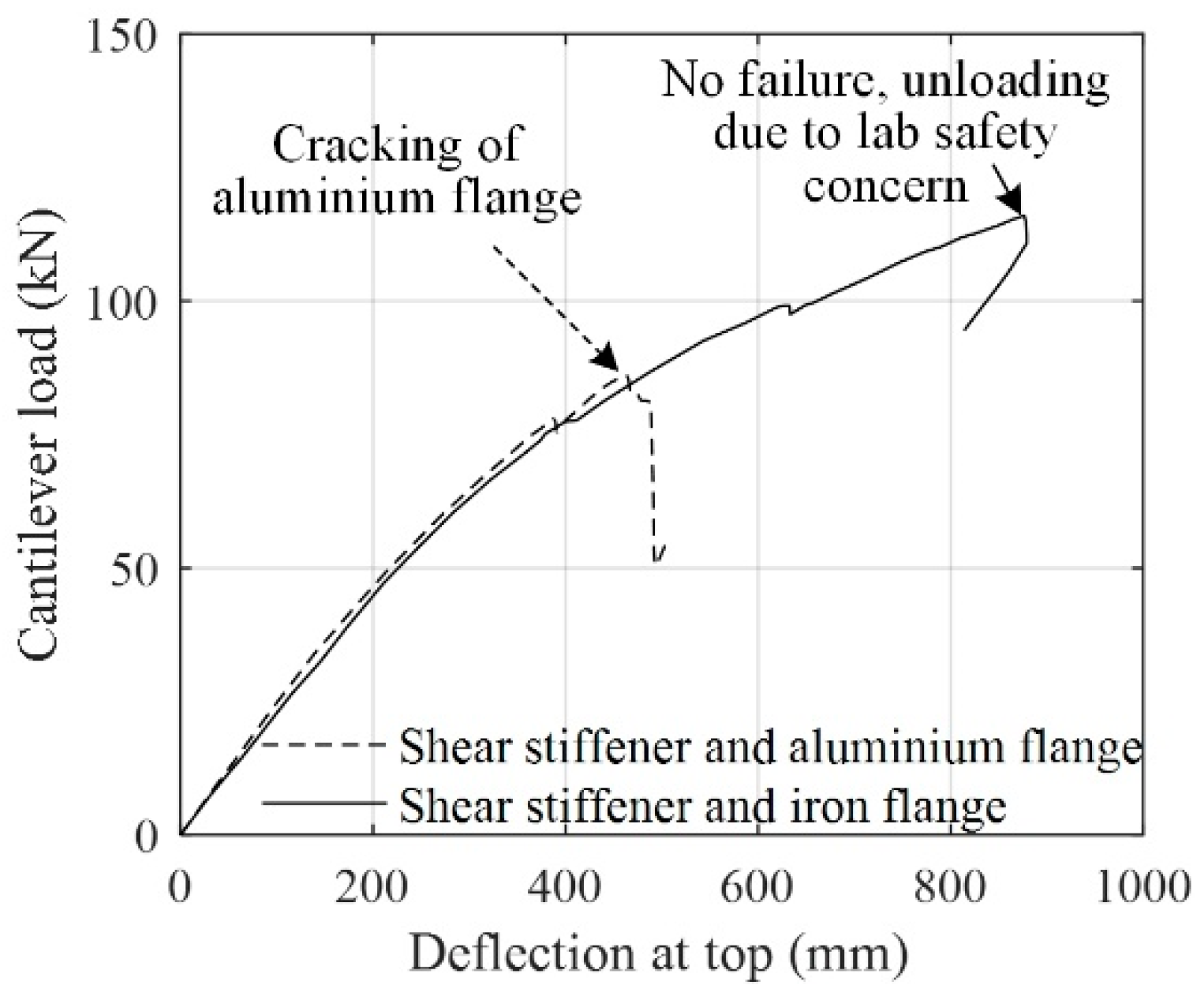

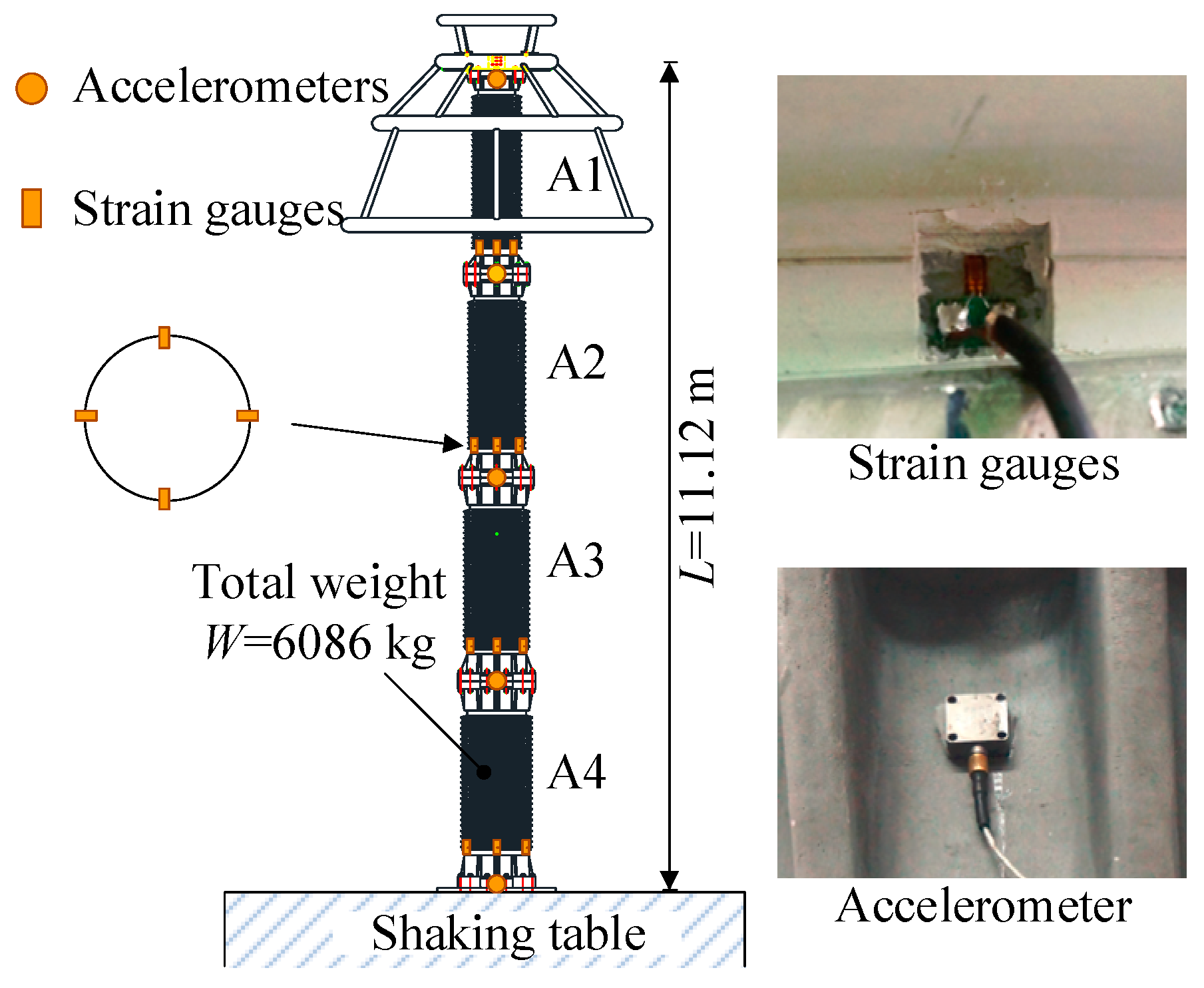

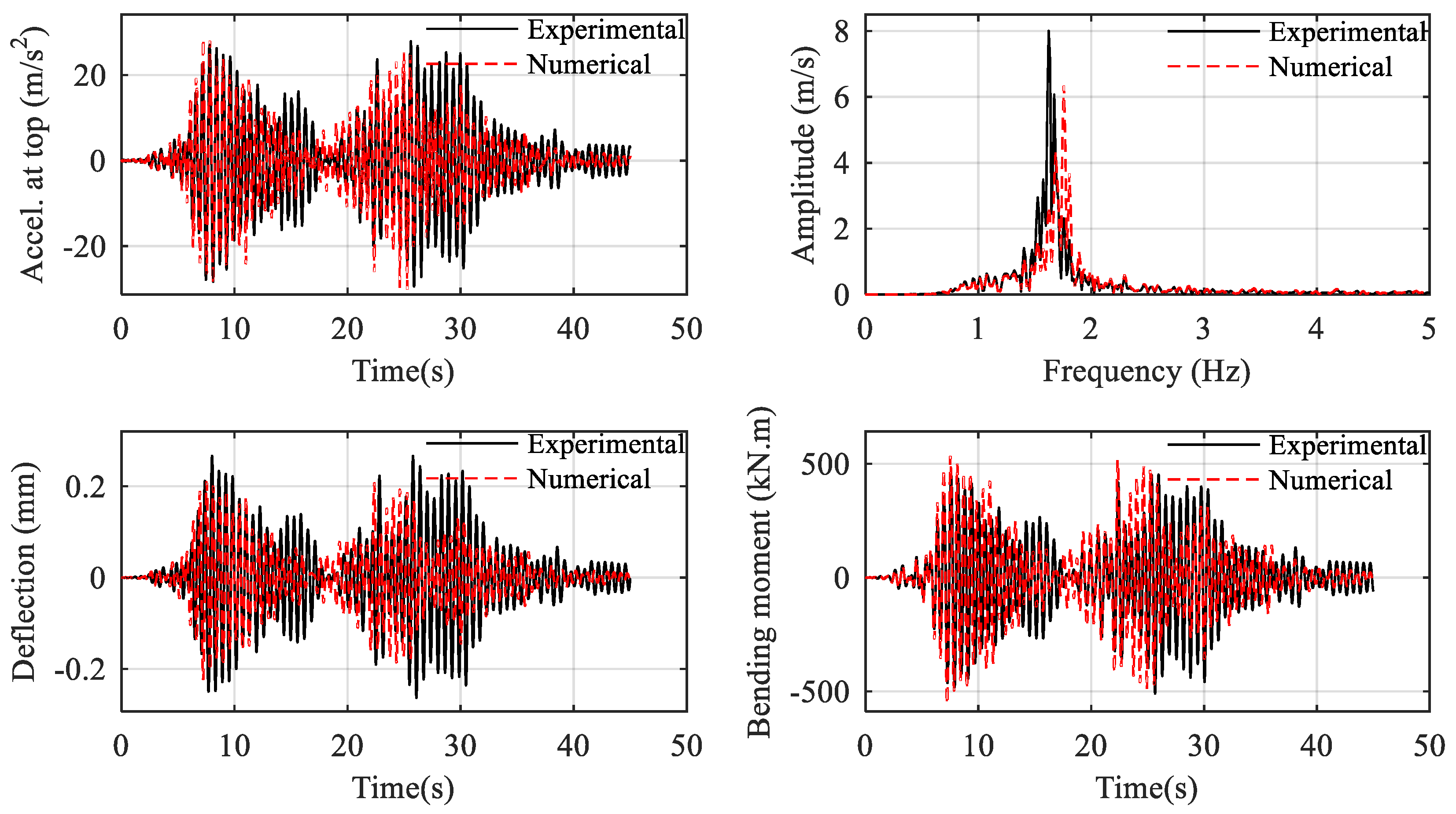
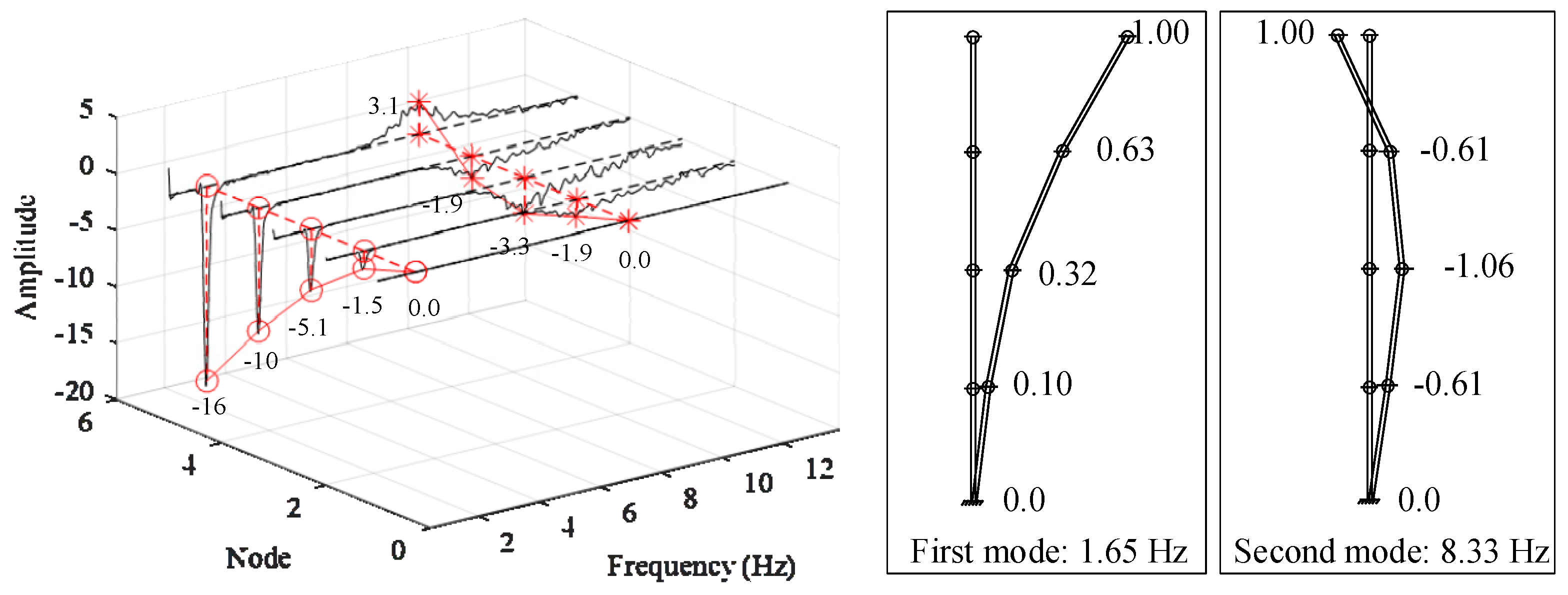

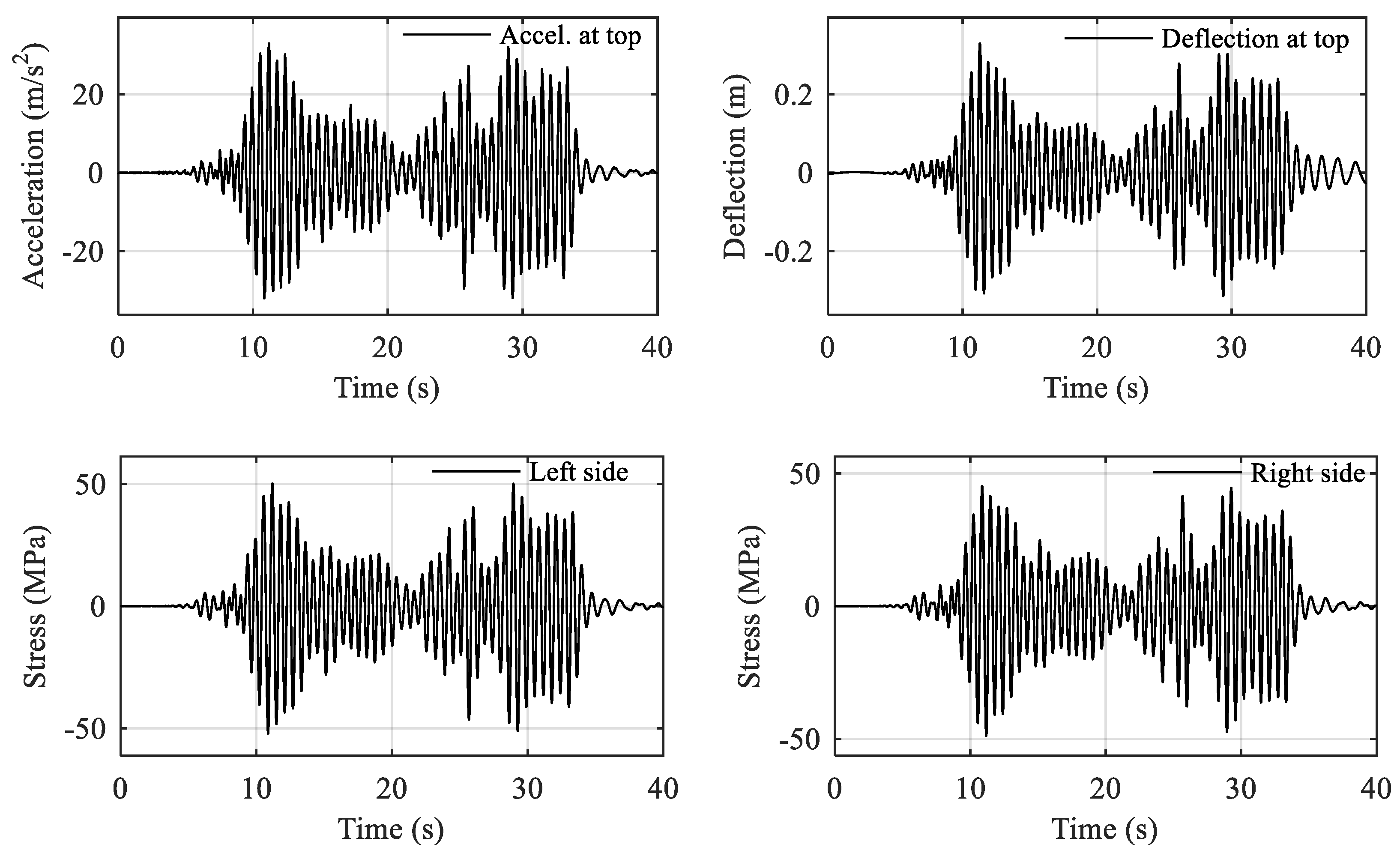

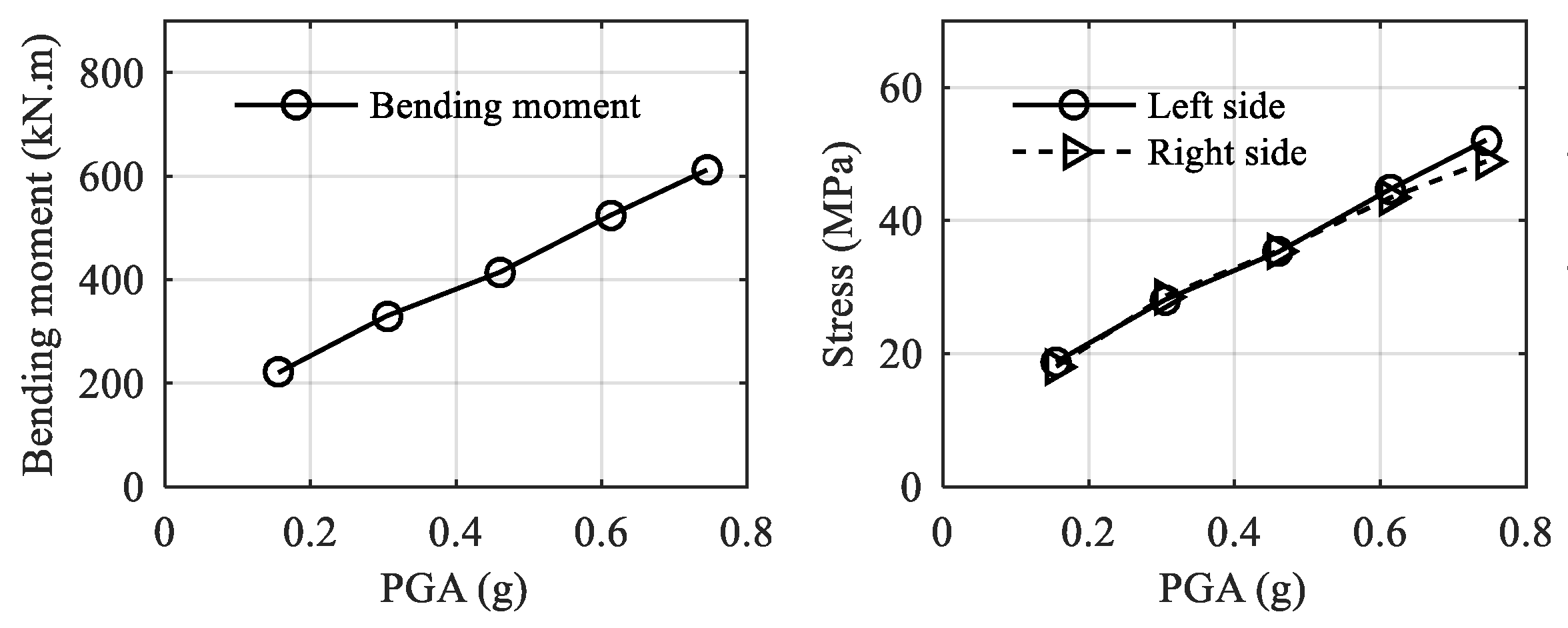

| No | Target PGA | Direction | Input Wave |
|---|---|---|---|
| 1 | 0.05 g | X | White noise |
| 2 | 1.4 × 0.1 g | X | GB-compatible wave |
| 3 | 0.05 g | X | White noise |
| 4 | 1.4 × 0.2 g | X | GB-compatible wave |
| 5 | 0.05 g | X | White noise |
| 6 | 1.4 × 0.3 g | X | GB-compatible wave |
| 7 | 0.05 g | X | White noise |
| 8 | 1.4 × 0.4 g | X | GB-compatible wave |
| 9 | 0.05 g | X | White noise |
| 10 | 1.4 × 0.5 g | X | GB-compatible wave |
| 11 | 0.05 g | X | White noise |
Publisher’s Note: MDPI stays neutral with regard to jurisdictional claims in published maps and institutional affiliations. |
© 2022 by the authors. Licensee MDPI, Basel, Switzerland. This article is an open access article distributed under the terms and conditions of the Creative Commons Attribution (CC BY) license (https://creativecommons.org/licenses/by/4.0/).
Share and Cite
Li, S.; Cheng, Y.; Lu, Z.; Lam, N.; Xue, Y.; Wang, H. Full-Scale Testing on Seismic Performance of Surge Arrester with Retrofitted Composite Insulators. Buildings 2022, 12, 1720. https://doi.org/10.3390/buildings12101720
Li S, Cheng Y, Lu Z, Lam N, Xue Y, Wang H. Full-Scale Testing on Seismic Performance of Surge Arrester with Retrofitted Composite Insulators. Buildings. 2022; 12(10):1720. https://doi.org/10.3390/buildings12101720
Chicago/Turabian StyleLi, Sheng, Yongfeng Cheng, Zhicheng Lu, Nelson Lam, Yaodong Xue, and Haibo Wang. 2022. "Full-Scale Testing on Seismic Performance of Surge Arrester with Retrofitted Composite Insulators" Buildings 12, no. 10: 1720. https://doi.org/10.3390/buildings12101720
APA StyleLi, S., Cheng, Y., Lu, Z., Lam, N., Xue, Y., & Wang, H. (2022). Full-Scale Testing on Seismic Performance of Surge Arrester with Retrofitted Composite Insulators. Buildings, 12(10), 1720. https://doi.org/10.3390/buildings12101720








